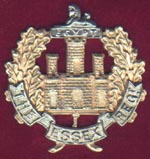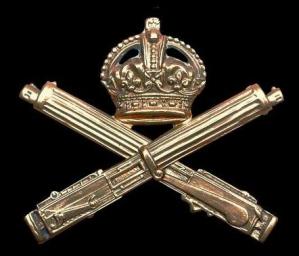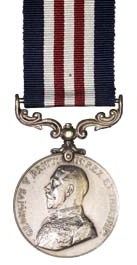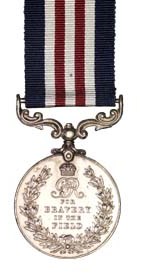Wilfred W. Livermore MM
 Wilfred William Livermore was born in Felstead on 18th
December 1897.
Wilfred William Livermore was born in Felstead on 18th
December 1897.
In 1901 the census records the family as living at Hartford End:
William Livermore - 42 - Horseman on Farm
Matilda Livermore (née Jarvis) - 40
Harry - 12
Florence - 9
Minnie - 7
Wilfred - 3
Samuel - 4 months
John - 4 months
 In 1911 the census tells us that the family is still at Hartford End.
Some of the older children have moved away:
In 1911 the census tells us that the family is still at Hartford End.
Some of the older children have moved away:
William Livermore - age 53 - Horseman on Farm - born Felstead.
Matilda Livermore - 50 - born Braintree.
Wilfred William Livermore - age 13 - Poultry boy on Farm - born
Felstead.
Samuel Livermore - age 10 - at school - born Felstead.
John Livermore - age 10 - at school -born Felstead.
Percy Leonard Livermore - age 6 - Grandson - born Felstead.
Wilfred enlisted at Chelmsford as Private Soldier 12200 with the 9th Battalion, the Essex Regiment in 1914 and went with the Battalion to France arriving on 30th May 1915. Amongst the other Felstead men of the 9th Battalion was Albert Jarvis, Wilfred’s cousin.
The 9th Essex were involved in the Battle of Loos in October 1915. After this period Wilfred transferred to the 35th Company of the Machine Gun Corps, which was part of the 12th Eastern Division with the 9th Essex and April 1916 were involved in preparations for the Battle of the Somme. The Division were not part of the disastrous first day of the Battle on 1st July 1916 but joined the fray on 3rd July. For five days the Division attacked the fortified village of Orvillers where Wilfred’s cousin Albert was injured. During the battle of the Somme the 12th Division lost 11,000 men.

 In
October 1916 Wilfred transferred to the 112th Company of the
Machine Gun Corps in September 1916 as Lance Corporal 60989. The 112th
Company were part of 37th Division which was involved in the Arras
Offensive of 1917. On the 23rd April 1917 the 112th
Infantry Brigade of the 37th Division supported by the
Machine Gun Corps sections attacked Greenland Hill north of the
fortified village of Roeux. The attack lasted until 29th
April 1917 and it was during this time that Lance Corporal Wilfred
Livermore in the number 4 gun team was used as a runner carrying
messages under enemy fire, an extremely dangerous task with an extremely
high casualty rate. He undertook the task with such commitment that he
was awarded the Military Medal. (Reported in the London Gazette of 9th
July 1917 and the Essex Weekly News of 13th July 1917.)
In
October 1916 Wilfred transferred to the 112th Company of the
Machine Gun Corps in September 1916 as Lance Corporal 60989. The 112th
Company were part of 37th Division which was involved in the Arras
Offensive of 1917. On the 23rd April 1917 the 112th
Infantry Brigade of the 37th Division supported by the
Machine Gun Corps sections attacked Greenland Hill north of the
fortified village of Roeux. The attack lasted until 29th
April 1917 and it was during this time that Lance Corporal Wilfred
Livermore in the number 4 gun team was used as a runner carrying
messages under enemy fire, an extremely dangerous task with an extremely
high casualty rate. He undertook the task with such commitment that he
was awarded the Military Medal. (Reported in the London Gazette of 9th
July 1917 and the Essex Weekly News of 13th July 1917.)
In the early part of 1918 the Machine Corps was re-organised and in
February 1918 Wilfred was transferred to newly formed ‘D’ Company of the
40th Battalion, and promoted to the rank of Serjeant.
When the German offensive South of Arras began on 21st March 1918 Wilfred found himself near the village of St Leger. As the British fell back the 40th Battalion of the Machine Gun Corps remained to cover the retreat, inflicting huge casualties. By the time the battalion was ordered to withdraw on 26th March the war diary recorded 9 killed, 65 wounded and 61 missing. Wilfred was amongst the missing.
The records of the International Red Cross show that Sergeant WW Livermore was captured at Gommecourt, and was detained as a prisoner of war and died, aged 20, on 24th May 1918 in a German Field Hospital, at Beugny, a village just north of Bapaumme. He was buried in plot 194 in a German Cemetery at Beugny. After the war he re-inhumed at the Favreuil British Cemetery. (photograph of grave courtesy www.britishwargraves.co.uk)
Much of the above is drawn from an article written for ‘Emma Gee’ the magazine of the Machine Gun Corps Old Comrades Association by Chris Weekes, the Great Nephew of Wilfred Livermore.
.